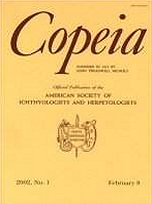I describe morphological and ecological characteristics including habitat use, diet, and male and female reproductive cycles of Mabuya longicaudata, an oviparous lizard inhabiting a tropical island off the coast of Taiwan. Nearly 50% (n = 76) of individuals observed were in holes in a concrete wall that had higher temperatures than other microhabitats. The diet consisted mostly of orthopterans (31.1%), coleopterans (20.5%), and hemipterans (15.2%). Four prey categories, Tettigoniidae, crickets, Scarabaeidae, and Cicadellidae, dominated the diet, and some lizards' stomachs contained plant food, including seeds, leaves, and fruit. The mean snout-vent length (SVL) of adult males (n = 71) was 118.7 mm (range 100.9–130.4), and that of females (n = 82) was 113.5 mm (range 98.1–126.8). Females exhibited a spring vitellogenic period with parturition occurring from February to August. The onset of vitellogenesis showed a negative correlation with the mass of the female fat bodies. Females produced one to 13 eggs per clutch, and clutch size was positively correlated with SVL. Two clutches were suggested during a single year in some individuals. Testis mass showed cyclical changes with a maximum in the breeding months from January to July. Male fat bodies exhibited the lowest mass from January to June, coincident with the period of reproductive activity. Clutch size in other Mabuya species are compared with those in M. longicaudata.
How to translate text using browser tools
1 May 2006
Ecological Characteristics of the Skink, Mabuya Longicaudata, on a Tropical East Asian Island
Wen-san Huang
ACCESS THE FULL ARTICLE





